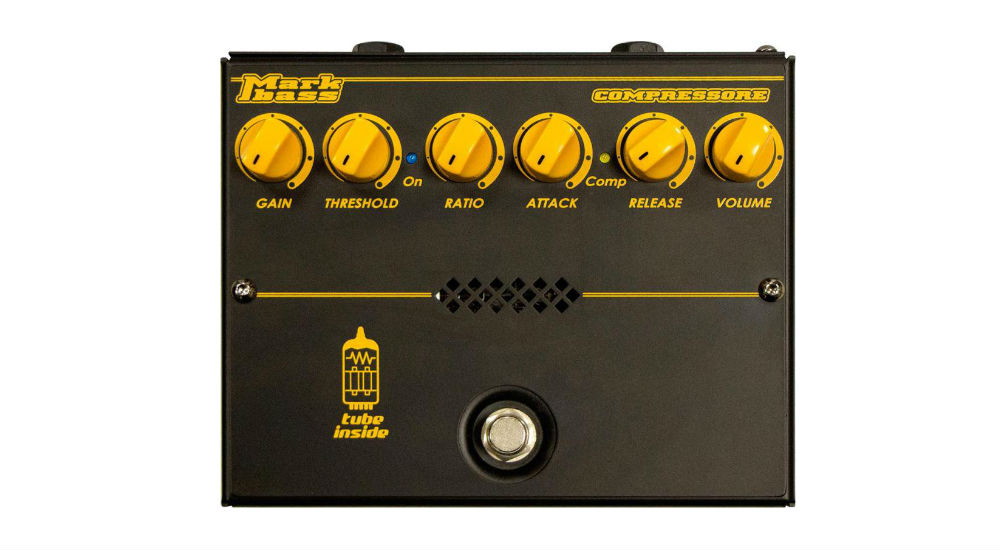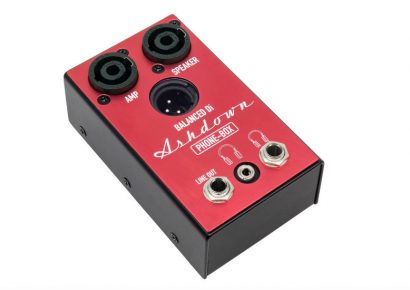It’s a bit larger and slightly more cumbersome than other compression pedals on the market – probably due to the valve that lives inside its chassis – but still trim enough to fit inside your gig bag.
For those who need some compression refreshin’, I’ll dive into that first before going into some of the Compressore’s features. If you’re already familiar with the ins and outs, by all means skip to the next section. Basically, you have your Threshold: that is, how loud the signal has to be before compression is applied. Next there’s the Ratio: how much compression is applied to your signal. If the ratio is set for 4:1, the input signal will have to cross the threshold by 4dB for the output to increase by 1dB. The overall effect here is that the signal is reduced by 3dB. The Threshold and Ratio are the two most important components of audio compression; reducing the threshold signifies that compression will be applied to more and more of your tone. Increasing the ratio means more compression to your signal. The make up gain simply helps you to recover any volume lost here. Admittedly, all of this is a lot easier to figure out once you’ve actually got the pedal in front of you.
One of the great things about the Compressore is that it really allowed me to get the most out of whichever bass I used with it. I started by running my 1985 Yamaha Precision Bass through it, then into my Nano Mark 300 Amplifier, which is twinned with my Markbass 2×10 cab (being half Sicilian, I try to be loyal!) If you’re predominantly a pick P-basser like me, the Compressore is awesome for getting maximum punch throughout your bass grooves. In this case, you want to set your Threshold dial at around 12 o’clock, and your Ratio at 2 o’clock. Leave the Gain, Volume and Attack dials all in the middle at 12 o’clock, while the Release is wound down completely. The resulting sound is so much more rhythmic and, when cranked up, exceptionally punchy. This compression setting is especially favourable if you’re delving into bass lines crafted by the likes of John Paul Jones of Led Zeppelin, and Andy Rourke of The Smiths, for example.
Another strong point of the Markbass Compressore is its ability to not only smoothen your bass tone dynamically, but also drastically reduce the annoying overtones that can sometimes seep through when playing loud. This was evident with my Yamaha Precision, but even more so when I plugged in my Fender Aerodyne Jazz. Typically, Jazz basses tend to be brighter than their Precision counterparts in the treble department; this is where compression becomes extremely useful. If you’re a slap player, then dial your Threshold to around 9 o’clock and your Ratio to 11 o’clock. You’ll hear just how well the Compressore takes the edge off of those popped notes, while making sure the slapped notes down-low come through just the same. The Markbass Compressore is a wonderfully crafted piece of machinery. With a bit of know-how, you’ll realise the potential it has to take your bass playing to the next level sound-wise.

